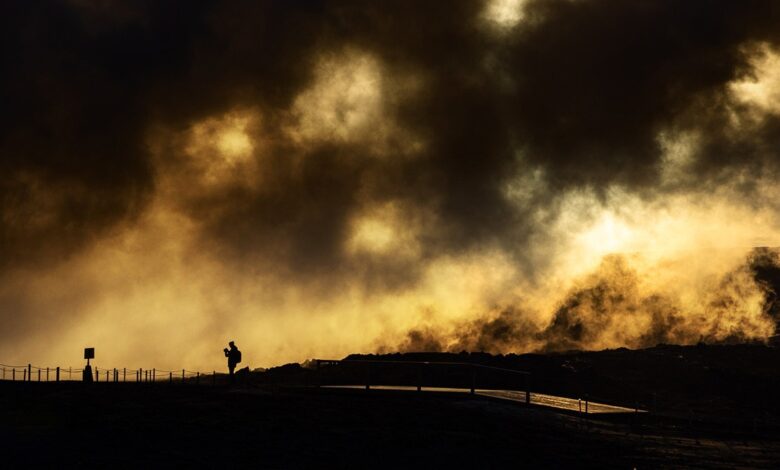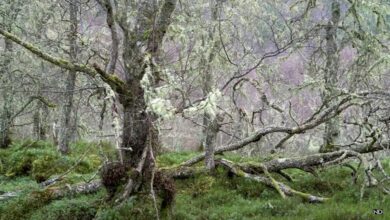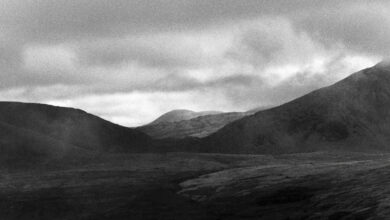Should You Use Human Elements in Landscape Photos?

If you search the internet, you will find a lot of landscape photos with human elements. Usually, one person will be in the frame, sometimes the photographer himself. In this article, I want to take a closer look at why you should sometimes use the human element in your landscape photos.
I have been photographing landscapes for many years now. During this time, I always tried to capture landscapes without any sign of human existence. It should be a fresh and pristine landscape, even if the location is in the middle of a small town or next to a highway.
Scenery from my imagination
The landscapes that I like are the ones from my imagination. Unspoiled human landscape, raw and unspoiled. With mountains and forests. The rivers flowed through the grasslands, the water glistening with the reflected sunlight. The landscape is mystical, like a dark fairy tale. These are the landscapes that I read about in the books of my favorite science fiction writer, Jack Vance. Well, of course these are the landscapes that I want to hike and photograph.
Unfortunately, there isn’t much of a pristine landscape left – at least, not in the Netherlands and surrounding countries. There are signs of civilization everywhere, although the word “civilization” sounds a bit out of place. I would call it a sign of human presence.
There are paths that cross the land. Power lines run through the landscape, and wind turbines are rising from the horizon. Even the sky is filled with man-made clouds, derived from the condensation trails of countless aircraft.
I usually try to keep signs of human presence out of the frame when looking for landscapes from my imagination. There’s just one big problem with these landscapes. If I succeed in capturing them without artificial elements, they lose their sense of perspective.
Sizes are relative in an image
A photograph is a two-dimensional image of a three-dimensional world. A photo without any depth; it just shows the illusion of depth. This illusion can be achieved by the paths, depth of field, and relative size of foreground objects relative to the background. Place a beautiful flower in the foreground with mountains in the background, and the illusion of depth is complete. At the same time, this can also lead to misunderstandings.
Shoot a simple rock in the foreground with a mountain backdrop. In that case, there’s no way of knowing how big the rock is in reality. This is due to lack of perspective. The photo doesn’t tell you what the actual size is. In some cases, landscape photos may not be as impressive as actual landscapes.
How can a human element help with perspective
Using something familiar in the frame can give the viewer a sense of size and dimension. The simplest way is a sign of human presence. Most of these man-made structures are of famous size. Incorporating at least one of these recognizable man-made elements into the frame gives the landscape a sense of size.
But there is another benefit to the human element in the landscape. I find it can help the viewer visualize what it’s like to roam the landscape. It gives the viewer something to look at, rather than a landscape devoid of any human existence and with no sense of size. But that recognizable human element in the landscape can also act as a subject, an anchor that holds the viewer within the frame.
That human element can be everything – a house or cabin, farm or castle. It could be the silhouette of a church on the horizon or even a wind turbine. Perhaps you can find a path that runs through the landscape toward the horizon. If you put a person in the frame, the photo can not only give a sense of dimension, it can also tell a story. Maybe that’s why many landscapes show a lonely sphere in the frame.
The human element can be a boon, but use it sparingly
A lot of photographers, myself included, have combined landscapes with selfies. This is a great memory, but it can also give a story to the photo, just like I explained. Two types of landscape selfies can be distinguished.
A landscape selfie is a lonely person looking at the landscape, where he or she fills an important part of the frame. This is a landscape photo that tells a story or even a memory from where you’ve been.
Another landscape selfie is a person or people inside the landscape. They are part of the landscape, taking up only a small part of the frame. These people often give a sense of the size of the landscape. They show the viewer how vast or vast the landscape is.
This is why I ocassionaly chose to capture an indication of human presence in the frame. I think it gives the landscape an added value. But that’s not always the case. While I see the benefit of the human element in the frame, there are plenty of situations where the original idea of a pristine landscape is a better choice. In other words, only add the human element if it fits the photo.
How do you feel about signs of human existence in a landscape photograph? Do you like those landscape photos? And you, how do you feel about the landscape selfie? Should we avoid these photos? Please share your opinion in the comments section below.




